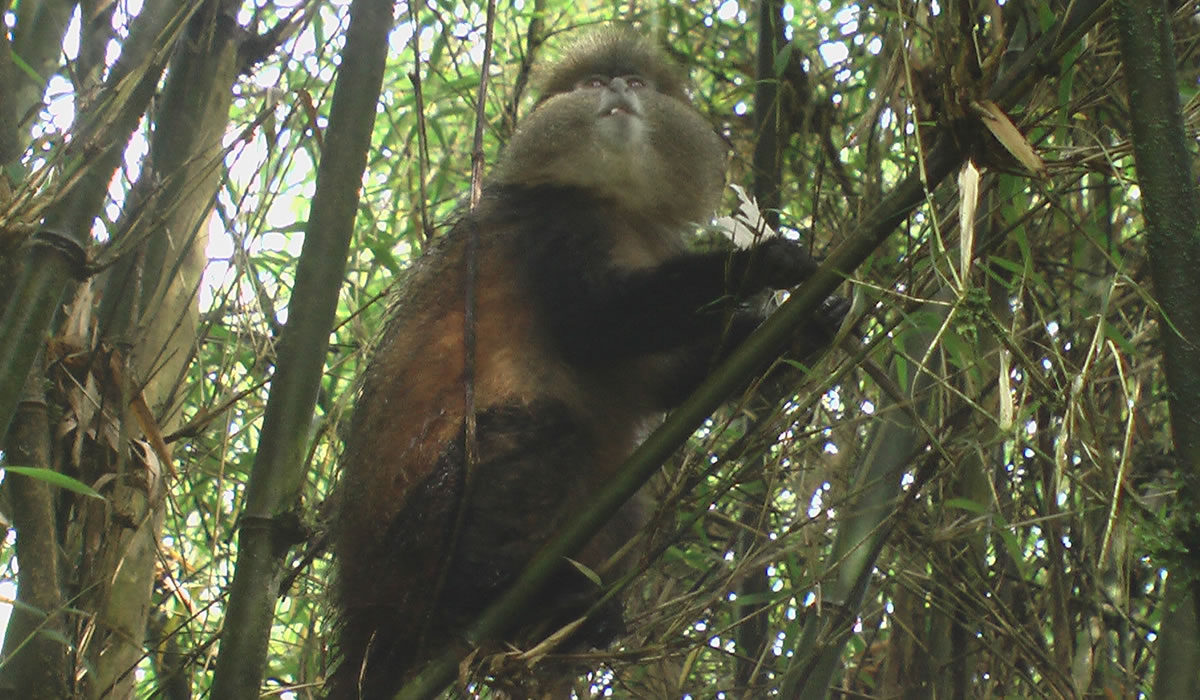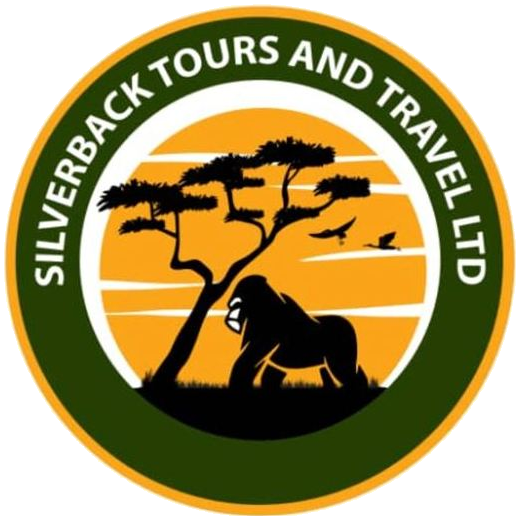Nestled in the northwestern corner of Rwanda, Volcanoes National Park is a crown jewel of biodiversity, conservation, and eco-tourism. Best known for its population of endangered mountain gorillas, the park is also home to another remarkable and equally captivating primate species the golden monkey (Cercopithecus kandti), a subspecies of the blue monkey endemic to the Albertine Rift region. Golden monkey tracking in Volcanoes National Park offers an enchanting and accessible wildlife experience, immersing visitors in the beauty of montane forests and the charming behavior of these colorful and energetic primates.
This article explores everything one needs to know about golden monkey tracking in Rwanda from its ecological significance and tracking logistics to best times to visit, permit requirements, conservation efforts, and travel tips providing a comprehensive guide to this unforgettable experience.

Understanding Golden Monkeys
Golden monkeys are small, agile primates characterized by their vibrant golden-orange fur on the back and flanks, contrasting with darker limbs and facial features. They live in large troops, often numbering between 30 to 100 individuals, and are known for their playful, social behavior, acrobatic movements, and lively vocalizations.
Primarily found in the bamboo forests and high-altitude montane zones of the Virunga Volcanoes shared between Rwanda, Uganda, and the Democratic Republic of Congo, golden monkeys are endemic to this region. While not as critically endangered as mountain gorillas, golden monkeys are still classified as endangered due to habitat loss, human encroachment, and limited range.
Golden monkey tracking in Volcanoes National Park provides a unique opportunity to observe this rare primate in its natural habitat while supporting ongoing conservation efforts.
Volcanoes National Park: A Primate Paradise
Established in 1925, Volcanoes National Park (Parc National des Volcans) is one of Africa’s oldest protected areas and covers an area of approximately 160 square kilometers. The park is dominated by a chain of dormant volcanoes, including Karisimbi, Bisoke, Sabyinyo, Gahinga, and Muhabura, forming part of the larger Virunga Massif.
While gorilla tracking is the park’s flagship activity, golden monkey tracking has become an increasingly popular addition or alternative for visitors seeking a less strenuous, more affordable, yet still highly rewarding primate experience. The bamboo and montane forests of the lower slopes of the volcanoes particularly Mount Sabyinyo and Mount Mgahinga serve as the primary habitat for golden monkeys in Rwanda.
The Golden Monkey Tracking Experience
Golden monkey tracking begins early in the morning at the Kinigi Visitor Center, the park’s headquarters located near the town of Musanze (formerly Ruhengeri). Visitors are required to arrive by 7:00 AM for registration, briefing, and group assignments. The actual trek typically starts around 8:00 AM and can last anywhere from two to four hours, depending on the location of the troops on that particular day.
The tracking process involves hiking through lush bamboo forests and mist-covered hills, guided by experienced Rwandan Development Board (RDB) trackers and rangers who are familiar with the terrain and the monkeys’ recent movements. The hike is generally less demanding than gorilla tracking, making it suitable for a wide range of fitness levels, including families and older travelers.
Once the monkeys are located, visitors are allowed to spend one hour in their presence, during which they can observe their natural behaviors feeding, grooming, leaping between bamboo stalks, or curiously observing the human visitors. These monkeys are well-habituated to humans, allowing for relatively close encounters and excellent photographic opportunities.
What to Expect on the Trek
The terrain varies depending on the location of the monkey troop. In most cases, the hike is relatively gentle, although some paths may be muddy, uneven, or steep in parts especially during the rainy season. The bamboo zones are cool and shaded, with plenty of birdlife and occasional sightings of other forest dwellers like bushbucks, duikers, or even mountain gorillas at a distance.
Golden monkeys primarily feed on young bamboo shoots, fruits, leaves, flowers, and occasionally insects. Their foraging behavior often brings them close to the ground, while their acrobatic leaps can take them high into the bamboo canopy in seconds. Observing them offers insights into the rich complexity of primate social structures and communication.
Permits and Fees
Golden monkey tracking requires a permit issued by the Rwanda Development Board (RDB). As of 2024, the cost of a golden monkey tracking permit is USD 100 per person, which includes park entry fees, a professional guide, and a one-hour encounter with the monkeys.
Compared to the USD 1,500 gorilla tracking permit, golden monkey tracking is significantly more affordable, offering a valuable experience for budget-conscious travelers or those unable to secure a gorilla permit.
Best Time to Go
Golden monkey tracking can be enjoyed year-round, but the experience varies depending on the season:
- Dry Seasons (June–September and December–February): The most popular and recommended time for tracking. Trails are drier and easier to navigate, and the bamboo forests are more accessible.
- Wet Seasons (March–May and October–November): The park is lush and green, which adds beauty to the trek, but trails can become muddy and slippery. The monkeys may also move deeper into the forest, requiring longer treks.
Morning hours are best for golden monkey activity and lighting conditions for photography. Regardless of the season, early starts are essential to maximize the chances of a successful and enjoyable trek.
What to Pack and Wear
To ensure comfort and safety during the trek, visitors should come prepared with:
- Sturdy hiking boots with good traction
- Long-sleeved shirts and trousers to protect against insect bites and stinging plants
- Rain jacket or poncho, especially during the rainy season
- Gardening gloves for grasping branches or walking sticks
- Daypack with water, snacks, and camera gear
- Sunscreen, sunglasses, and a hat
- Insect repellent for mosquitoes and other forest insects
- Binoculars for bird watching and observing monkeys from a distance
Walking sticks are often provided by guides or available for hire at the park headquarters.
Conservation Significance
Golden monkey tracking not only offers a memorable wildlife experience but also plays a vital role in conservation and community development. Revenue generated from tracking permits supports the management of Volcanoes National Park, habitat protection, and anti-poaching efforts.
A portion of the income is also distributed to local communities through the Tourism Revenue Sharing Program, which funds schools, health clinics, and infrastructure projects in villages surrounding the park. This model has helped foster positive community attitudes toward conservation, reducing human-wildlife conflicts and illegal resource use.
The habituation of golden monkeys for tourism has also advanced scientific research and improved understanding of their social behavior, diet, and ecological role.
Golden monkey tracking in Volcanoes National Park is a vibrant, rewarding, and conservation-friendly activity that complements Rwanda’s reputation as a premier primate-watching destination. With its enchanting forest setting, fascinating wildlife, and seamless integration into the broader ecotourism framework, it offers a compelling alternative or companion to gorilla trekking.
Whether you’re a wildlife enthusiast, nature photographer, or first-time safari-goer, tracking golden monkeys allows for an intimate encounter with a rare species and a deeper connection to Rwanda’s extraordinary natural heritage. With proper planning, ethical travel practices, and an open sense of adventure, golden monkey tracking in Volcanoes National Park becomes not just an activity but a story you’ll carry for a lifetime.

